I want to create a simple physics system in python that works on quaternions in a similar fashion as velocity/position. Its main goal is to simulate one object being dragged and try to catch up to another over time. The simulation uses 3 variables: k: the spring constant, d: a dampening factor, and m: the mass of the dragged object.
Using classic euler integration I can solve the positions with:
import numpy as np
from numpy.core.umath_tests import inner1d
# init simulation values
dt = 1./30. # delta t @ 30fps
k = 0.5 # Spring constant
d = 0.1 # Damping
m = 0.1 # Mass
p_ = np.array([0,0,0]) # initial position of the dragged object
p = np.array([1,2,0]) # position to catch up to, in real life this value could change over time
v = np.array([0,0,0]) # velocity buffer (init speed is assumed to be 0)
# Euler Integration
n = 200 # loop over 200 times just to see the values converge
for i in xrange(n):
x = (p-p_)
F = (k*x - d*v) / m # spring force
v = v + F * dt # update velocity
p_ = p_ + v * dt # update dragged position
print p_ # values oscillate and eventually stabilize to p
This works great for position. By changing k,d and m I can get a snappier/heavier results and overall I'm satisfied with how it feels:
Now I want to do the same thing with quaternions. Because I have no experience doing physics with quaternions, I went down the naive road and applied the same function with a few modifications to deal with quaternion flips and normalization.
# quaternion expressed as x,y,z,w
q_ = np.array([0., 0., 0., 1.]) # initial quaternion of the dragged object
q = np.array([0.382683, 0., 0., 0.92388]) # quaternion to catch up to (equivalent to xyz euler rotation of 45,0,0 degrees)
v = np.array([0.,0.,0.,0.]) # angular velocity buffer (init speed is assumed to be 0)
# Euler Integration
n = 200
for i in xrange(n):
# In a real life use case, q varies over time and q_ tries to catch up to it.
# Test to see if q and q_ are flipped with a dot product (innder1d).
# If so, negate q
if inner1d(q,q_) < 0:
q = np.negative(q)
x = (q-q_)
F = (k*x - d*v) / m # spring force
v = v + F * dt # update velocity
q_ = q_ + v * dt # update dragged quaternion
q_ /= inner1d(q_,q_) # normalize
print q_ # values oscillate and eventually stabilize to q
And to my great surprise it gives me very decent results!
Because I went with my instinct, I am sure my solution is flawed (like if q and q_ are opposed) and that there is a correct/better way to achieve what I want.
QUESTION:
What is the correct way to simulate spring forces on quaternions that takes into account (at minimum) the mass of the dragged object, a spring stiffness and a damping factor.
Actual python code would be greatly appreciated as I have great difficulty reading PhD papers :). Also for quaternion manipulations I usually refer to Christoph Gohlke's excellent library, but please feel free to use any others in your answer.

